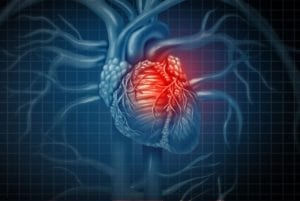
It’s both exciting and frustrating when you learn that the majority of what you have been taught about a subject is likely wrong. The exciting part only applies when you find out that something that was thought to be irreversible can be changed for the better. The frustrating part is that it was probably right in front of our eyes all along and we just couldn’t see it because of the way we think about and approach certain problems like the loss of cognitive function.
We are losing millions of nerve cells every day and at the same time we are making tens of millions of new connections between nerve cells. I have always thought that there is a network effect. Memory is not localized to a single area but spread out across the brain in arrays of nerve cells that fire together forming functional networks. As we strengthen these networks we become more resilient, wiser and in a lot of ways smarter. So even with the loss of brain cells, in many ways we can get smarter and smarter.
THE MOST ENCOURAGING SINGLE FACT I EVER HEARD ABOUT THE RISK OF COGNITIVE DECLINE IS THAT IT IS SAID THAT NO PROFESSIONAL CONCERT PIANIST HAS EVER GOTTEN ALZHEIMER’S.
This says to me that the quality of the networks we build and the effort we put in to maintain and build them over time are critical factors in how well our brain works as we age.
We have been taught that for those who start to get cognitive decline that once the problem starts to take ahold there is often a steady decline and not much to do about it. A few simple blood tests, an imaging study, a questionnaire or more formal testing of cognitive function, and a medicine or two that might or might not slow your decline is the best you can hope for. What an abysmal and sad story. And worse yet it’s a story we have lived with for years and years. A story that should horrify current generations as we age and a larger percent of the population moves into the age ranges where cognitive decline is most prominent.
Red and most of the rest of us have been under the illusion that cognitive decline is just something that happens to us, something that jumps out from behind a tree and bites us, something inevitable for many of us that must be from our genes. And while there are certainly genetic variants that are higher risk, the wrong genes are by no means a certain sentence that you will get dementia. After we got all wound up in the double helix we used to think that 90% of what happens to us occurs because of the genetic patterns we are born with and there wasn’t much you could do about it.
The new king in town is Epi-Genetics. Not to worry, Genetics still has a nice condo overlooking the river. But Epi-Genetics – the science of which genes are turned on and off and by what is now living in the palace. And when those living in the palace mostly eat from the lush garden that surrounds the joint instead of heading down to the local pub for bangers and mash or fried everything soaked in ethanol then good things start to happen. Genes that can cause harm tend not do to so. Genes that repair your cellular architecture start to do so. Now it looks like 90% of what happens to us is wrapped up in the diet, lifestyle, social and environmental factors that modulate epigenetic phenomenon.
We are learning that addressing all the various factors from nutrition, to antioxidants, subtle chronic infections, heavy metals, persistent organic pollutants, loss of beneficial bacteria in our gut and beneficial trophic factors such as hormones along with dysregulation of blood sugar in the brain and the body along with many more identifiable and definable ingredients create an environment where the brain is damaged one cell at a time. By sorting these critical factors into groups – sugar related, toxin related, repetitive trauma, vascular insults, and loss of key beneficial factors Alzheimer’s is coming into focus. Not as a single disease, but as a final common pathway that can result from dysregulation and disruption of multiple paths.
When we can more clearly categorize something, we have a chance to address it. For people at the earliest stages of cognitive decline some dramatic success stories are starting to emerge from Functional Medicine practitioners using multimodal programs to address and patch these defects. Red can rest a little easier when she gets to Grandma’s. Maybe if she stays there long enough the fearsome wolf will be evicted and the entrepreneurial Coyote will own the forest for the benefit of all. That would be a trick worthy of a Trickster or a non-linear scientist and healer.





